Feb 22 2023
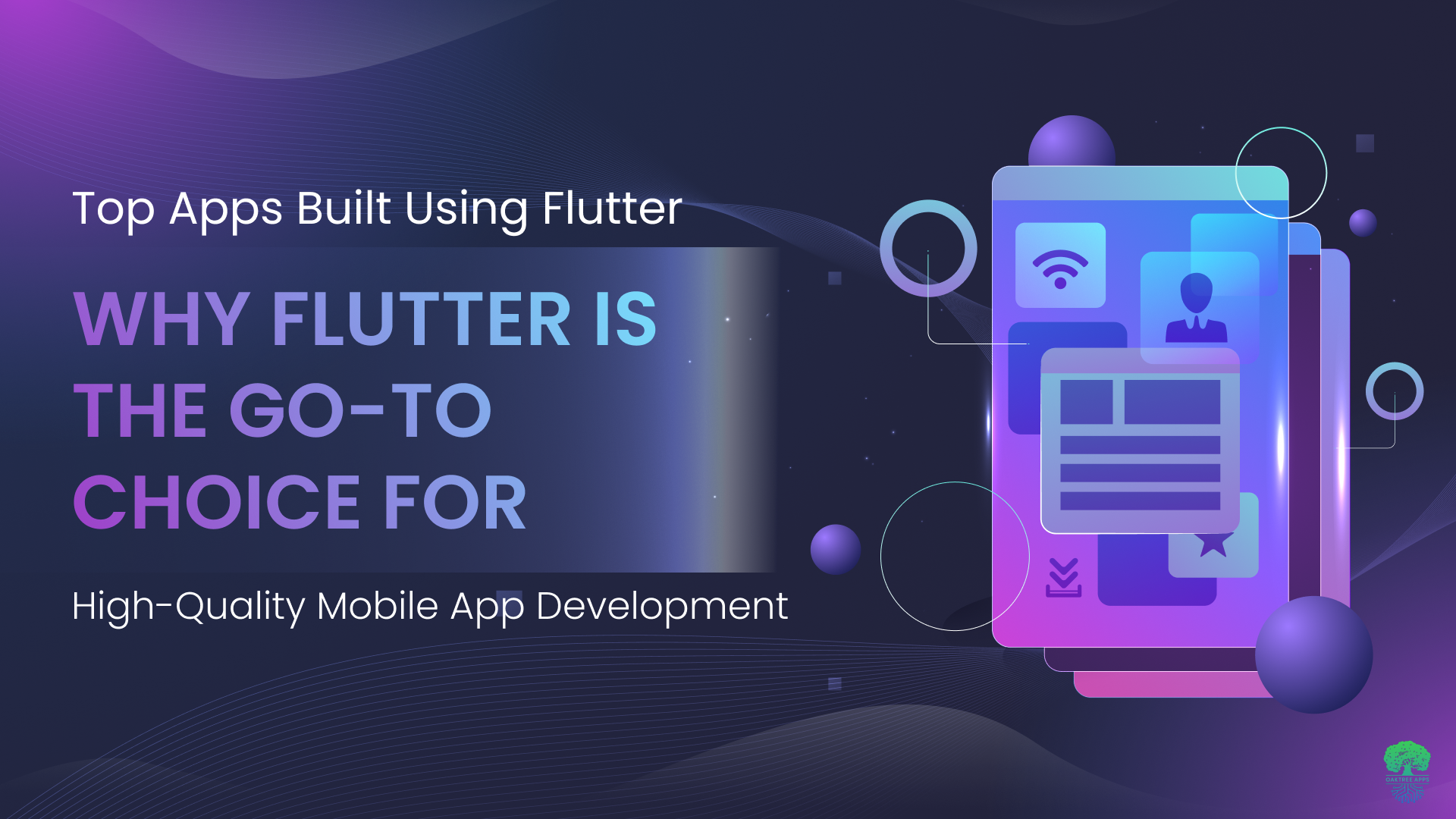
Why Flutter is the Go-To Choice for High-Quality Mobile App Development
Introduction to Flutter
Building mobile apps used to be an expensive and time-consuming task. Developers had to use different programming languages, such as Objective C/Swift and Java/Kotlin, to create separate apps for iOS and Android platforms, meaning double the work, time, and cost.
To resolve this challenge, a lot of frameworks were introduced, such as PhoneGap, Xamarin, and React Native, were introduced. But one framework has become popular for developing high-quality, high-performance mobile apps for Android and iOS. Launched in 2017 by Google, Flutter is a robust and versatile portable UI toolkit that allows developers to build native-like apps across mobile, web, and desktop platforms, all from a single codebase.
Flutter provides a fast and efficient development experience. The framework uses Dart programming language and incorporates Material Design and Cupertino widgets that enable developers to create stunning apps that behave natively on their respective platforms without having to write separate codebase for each.
Why do brands like Flutter?
Flutter is an open-source framework, meaning developers can use it for free, and the community is continuously improving and updating the framework. With Flutter, brands can create scalable, user-friendly, and high-quality mobile apps with excellent performance. Additionally, Flutter provides a modern and reactive user interface that enhances the user experience, making it a popular choice for many businesses.
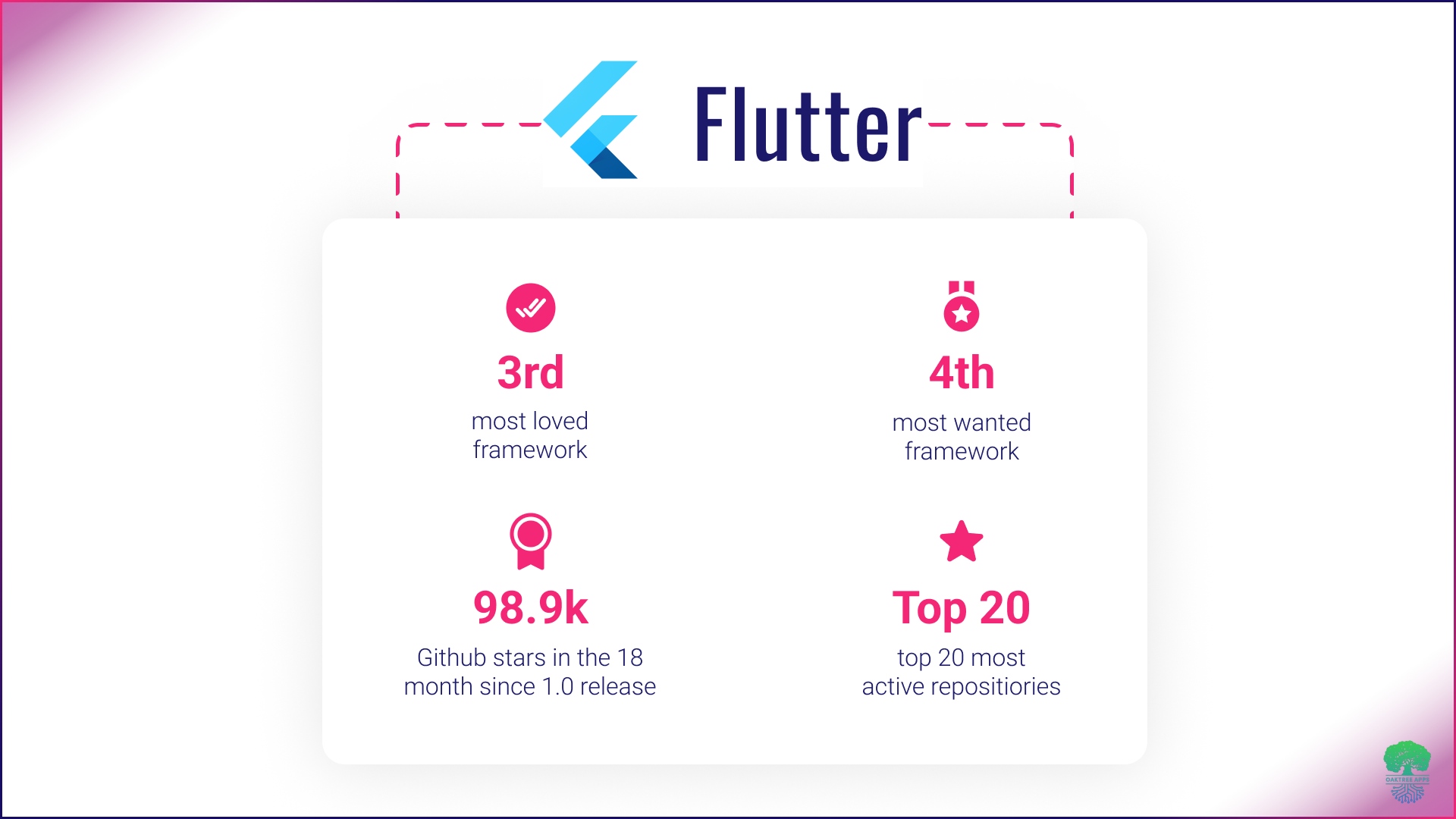
Flutter Vs Other Frameworks
| Framework | Flutter | React Native | Xamarin | Ionic |
|---|---|---|---|---|
| Language | Dart | JavaScript | C# | TypeScript |
| Performance | Fast and efficient | Slower than Flutter, but still performs well | Slower than Flutter and React Native | Slower than Flutter and React Native |
| Platform Support | Android, iOS, Web, Windows, macOS, Linux | Android, iOS, Web, Windows, macOS | Android, iOS, Windows, macOS | Android, iOS, Web, Windows, macOS, Linux |
| Code Reusability | High (Single codebase for multiple OS) | High (Single codebase for multiple OS) | Moderate (Shared code between OS) | Moderate (Shared code between OS) |
| UI/UX | Native look and feel | Native look and feel | Mostly native, some customization required | Mostly customizable, some native components |
| Community | Growing | Large and active | Mature and stable | Large and active |
| Learning Curve | Moderate to high | Moderate to high | Moderate to high | Moderate to low |
| Tooling and IDEs | Flutter comes with a powerful toolset | React Native comes with a powerful toolset | Visual Studio, Xamarin Studio, and more | Ionic comes with a powerful toolset |
| Cost of Development | Relatively low | Relatively low | High | Relatively low |
Flutter App Development for Android and iOS
Flutter uses a single codebase, meaning developers only need to write code once to build an app that runs seamlessly on Android and iOS. This saves time, money, and resources, making it an excellent choice for startups and large enterprises. Furthermore, Flutter’s widgets are adaptable to each platform, ensuring that the app has a native look and feel. Flutter also allows for hot-reloading, allowing developers to see changes to their code in real-time.
Unlock the Potential of Flutter
Create Outstanding cross-platform apps for both Android and iOS
Talk To Our ExpertsWhat you can build using Flutter
Flutter’s reactive programming model allows for fast and efficient app development making it ideal for developing apps that require high performance, responsiveness, and customization. With Flutter, you can build a wide range of apps, including social media apps, e-commerce platforms, personal journaling apps, news and information apps, education, and learning apps, and many more. Flutter is also great for developing apps that require real-time data processing, such as fitness tracking or navigation apps.
Apps built with Flutter you won't Believe are cross-platform apps
Here are some of the top apps built with Flutter that showcase its versatility as a cross-platform app development framework:
Google Ads: The name that needs no introduction. Google's pay-per-click (PPC) platform allows businesses to gain visibility across Google's search engine and partner websites. The app is built with Flutter, which provides a smooth and efficient user experience. The app's interface is intuitive and easy to navigate, and users can access their ad campaigns, adjust budgets, and view performance reports from anywhere.
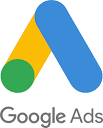
Reflectly: Reflectly is a personal journaling app that uses Flutter to provide an excellent user experience. The app is designed to help users track their moods, set goals, and reflect on their daily lives. Reflectly was initially built using React Native but faced challenges with cross-platform development, particularly with Android. As their app grew in popularity, they decided to abandon the existing codebase and rewrite everything. In early 2018, they stumbled upon Flutter, which promised cross-platform consistency, stateful hot reloading, great tooling, and high performance. Despite some concerns, they rewrote the entire Reflectly app in Flutter.
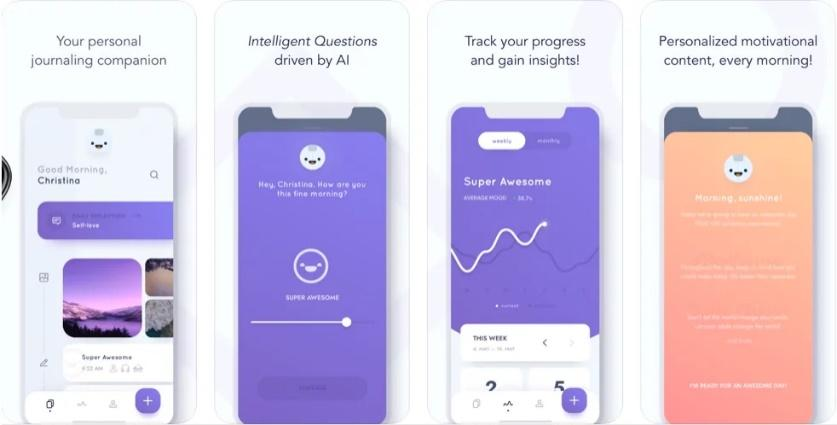
Tencent Now: Tencent Now provides users with the latest news, weather, and other information worldwide. The app boasts a modern and intuitive design and offers a wide range of features, such as customizable news feeds, personalized notifications, and real-time weather updates.
Hookle: Hookle is a social media management app that displays all your social posts on one dashboard. It allows you to plan, schedule, and publish posts to all your channels directly from Hookle and monitor your social media performance through simple analytics. Hookle uses Flutter to provide a smooth and efficient user experience. The app's interface is easy to use and offers many features, such as scheduling posts, analyzing performance metrics, and responding to messages and comments.
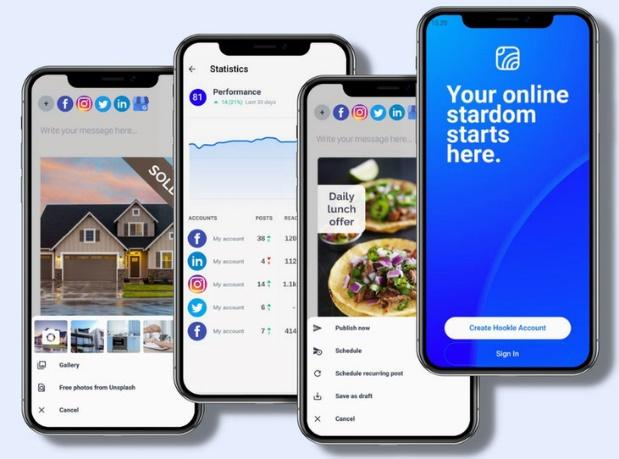
Groupon: PostMuse is an Instagram story and templates maker. Despite having a team of just two people, with only one coder, they were able to build the media editing app in just a few months, including research. They attribute their swift progress to using Flutter, which allowed for quick reloading, easy maintenance, and efficient UI building. The team also found that Flutter's implementation of Material Design was more accurate than Android's.
PostMuse: Popular e-commerce marketplace Groupon app offers users deals and discounts on a wide range of products and services, including travel, restaurants, and entertainment. In 2018, they decided to integrate Flutter into their existing app rather than completely rewriting the Groupon Merchant app. To implement new features such as voucher redemption and payment data visualization, they incorporated Flutter submodules into their native platform. This approach saved them significant time and money that would have been required to develop an entirely new application.
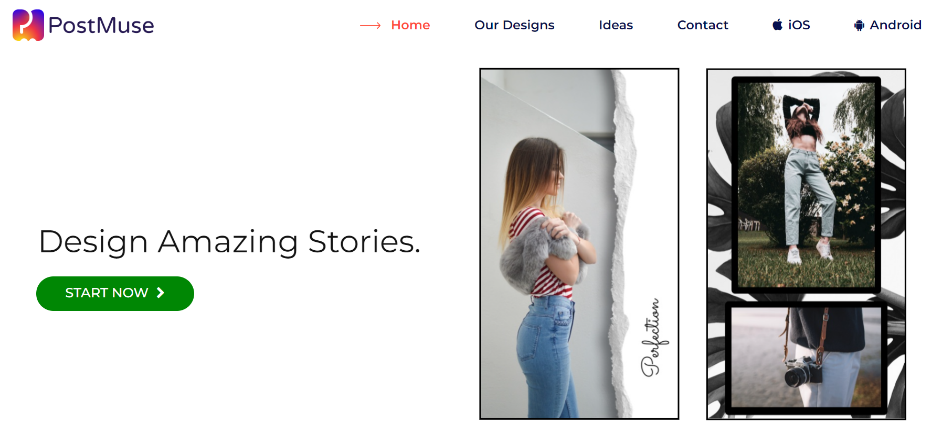
eBay: In 2018, the eBay Motors team was tasked with developing a new Android and iOS app with a full feature set and the same look and feel as the main eBay app in under a year. Given their limited size, building two separate native apps was impossible in that amount of time, so they searched for a cross-platform solution and decided on Flutter. Flutter handled everything they threw at it, including testing and cross-platform code sharing. They met every deadline in their production schedule, launched a beta version within three months, and released a full production app a few months later. The eBay Motors team could share code for almost everything, resulting in 98.3% of code being shared between the two platforms.
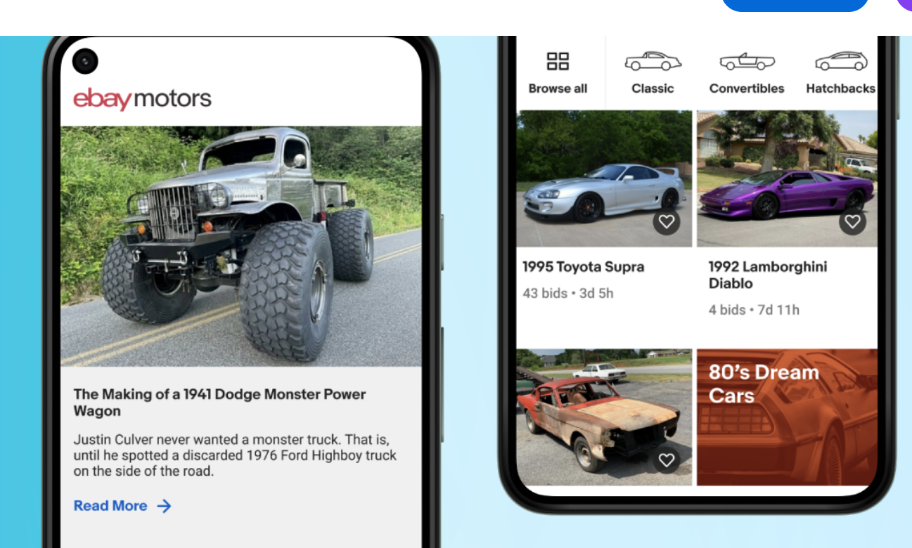
Realtor.com: Realtor.com is a popular real estate application that allows users to search for homes for sale and rent. Realtor.com's mobile app development began in 2010 using Objective C and Java, and later, Swift and Kotlin. However, issues with scaling and collaboration led them to re-evaluate their development approach. After assessing different cross-platform development solutions, they chose to use Flutter, starting with a proof-of-concept feature successfully implemented in the production Android app. They then added more screens and features, including a chat function, with positive results.
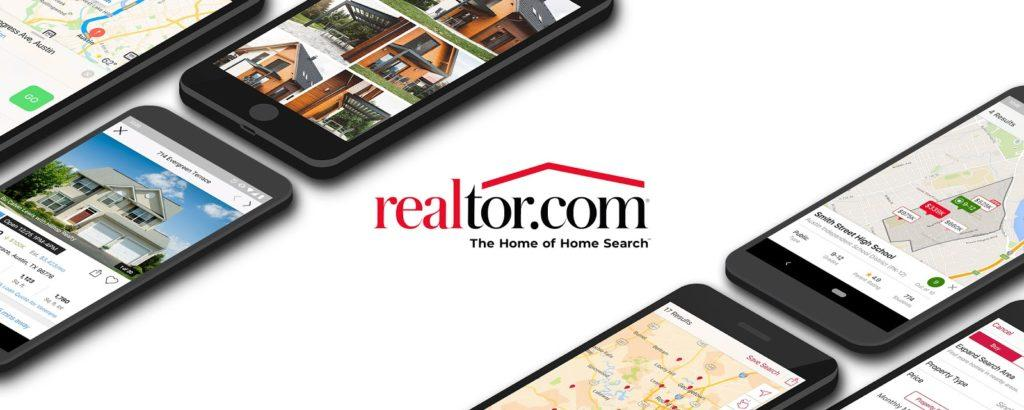
Hamilton: Hamilton is the official application of the hit Broadway show Hamilton. Flutter's incredible productivity enabled the launch of the Hamilton app on both iOS and Android in just three months with a user experience and scope of features that would have been impossible to deliver the scope of features on-budget without Flutter. The app included various features, including a daily ticket lottery, camera filters, news and information, and an in-app merchandise store. The app's success demonstrated that Flutter is a great choice for large-scale production apps, inspiring a new breed of Flutter developers.
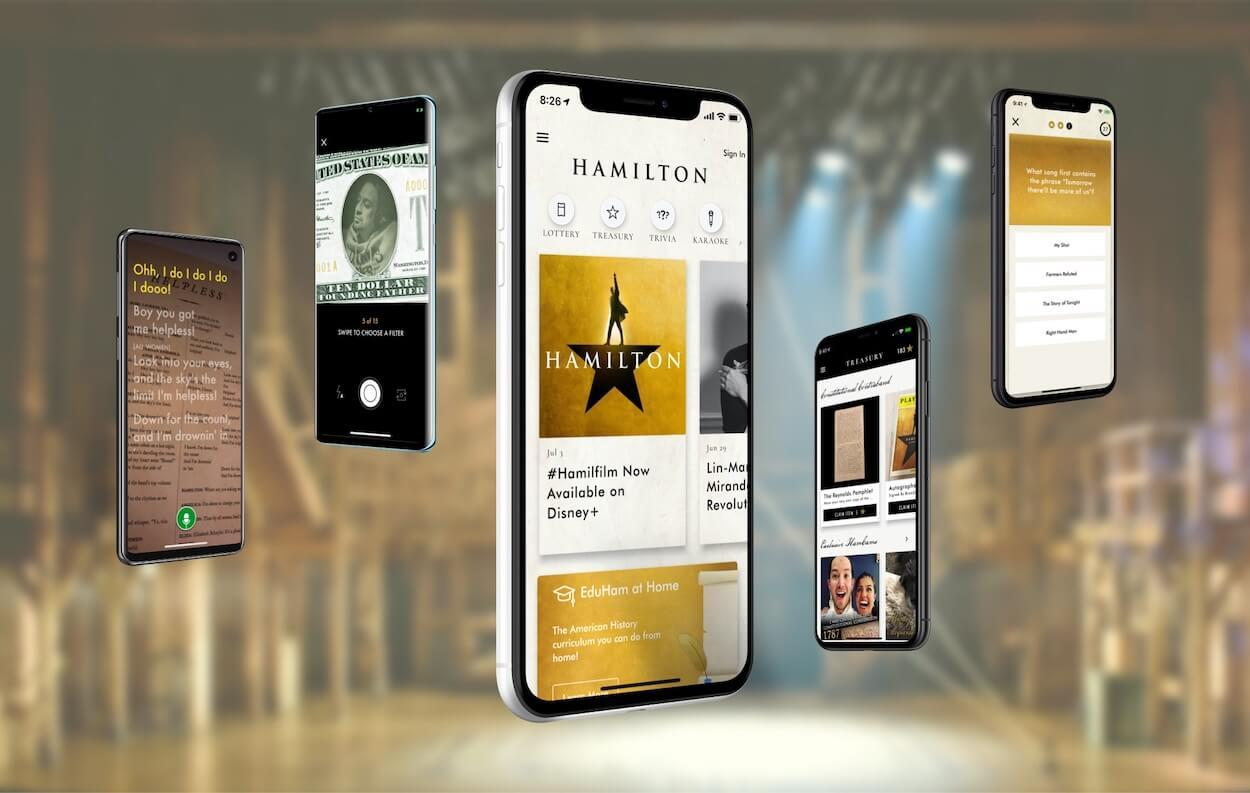
Websites Built with flutter
Flutter can also be used to build websites, allowing developers to create a seamless user experience across both web and mobile platforms. The same codebase can be used for both web and mobile, saving time and resources. Some notable websites built with Flutter include Reflectly, Flutter Jobs, and FlutterFlow.
Tech Stack for Flutter
Flutter's tech stack includes Dart programming language, Flutter framework, Skia Graphics Library, and Flutter SDK. Dart is a client-optimized programming language used for both the front-end and back-end of the application. Dart is easy to learn and offers many benefits, such as fast development time and strong typing. The Flutter framework provides customizable widgets, tools, and libraries to create a beautiful and interactive user interface. Skia Graphics Library is an open-source graphics library used to create UI components. Flutter SDK includes everything that is needed to develop Flutter applications.
Architecture for Flutter
Flutter follows the BLoC (Business Logic Component) architecture, which separates the business logic from the presentation layer. This allows for clean code, better scalability, maintainability, and testability of the application. Additionally, Flutter uses reactive programming to allow fast and efficient app development.
Do you have an idea that needs to be executed?
If you have an idea for a mobile app, website, or desktop application, Flutter can help you bring your idea to life with its flexibility, speed, and excellent performance. Contact us for a free consultation and see how we can help you build a high-quality and efficient product.
Waiting For Your App Idea to Be Brought to Life?
Connect with our experts today to turn your idea into a reality
Contact UsReady to get started? Contact our team for a free app consultation.
FAQs
From simple to complex, single-page to multi-page, and from small to large scale, Flutter can be used to build almost any type of application. Some popular apps that can be developed with Flutter include social media apps, eCommerce apps, finance apps, education apps, games, and much more.
Absolutely! Flutter has gained a lot of popularity in recent years due to its ability to produce high-quality, visually appealing, and performant mobile applications. With Flutter, developers can create apps with a native-like look and feel, which translates into a great user experience. Additionally, Flutter offers a wide range of widgets and plugins, making it easier for developers to add functionality and features to their applications.
While Flutter is a powerful and versatile framework, there may be better options for developing applications that require low-level hardware access, such as games or hardware-specific features. Furthermore, Flutter may not be ideal for high-performance graphics or real-time rendering applications. A more specialized tool or framework may be better in these cases.
Yes, Flutter has a bright future ahead. The framework is backed by Google, which means it has a strong support system, regular updates, and a growing community. Flutter is also being adopted by more and more developers and companies, which suggests that it will continue to evolve and become more robust over time.
Flutter and React are both fast frameworks, but they differ in how they achieve speed. Flutter uses Dart, a compiled language that compiles native code, which makes it fast and efficient. React, on the other hand, uses a virtual DOM, which may result in slightly slower performance. However, in practical terms, the difference in speed between the two frameworks is minimal and often depends on the specific use case.
There are many backend options available for Flutter, and the best one depends on the specific needs of your application. Some popular backend options for Flutter include Firebase, AWS, and Google Cloud. Firebase is a popular choice for small to medium-sized apps due to its ease of use and robust features. AWS and Google Cloud are better suited for larger-scale applications requiring more complex functionality.

